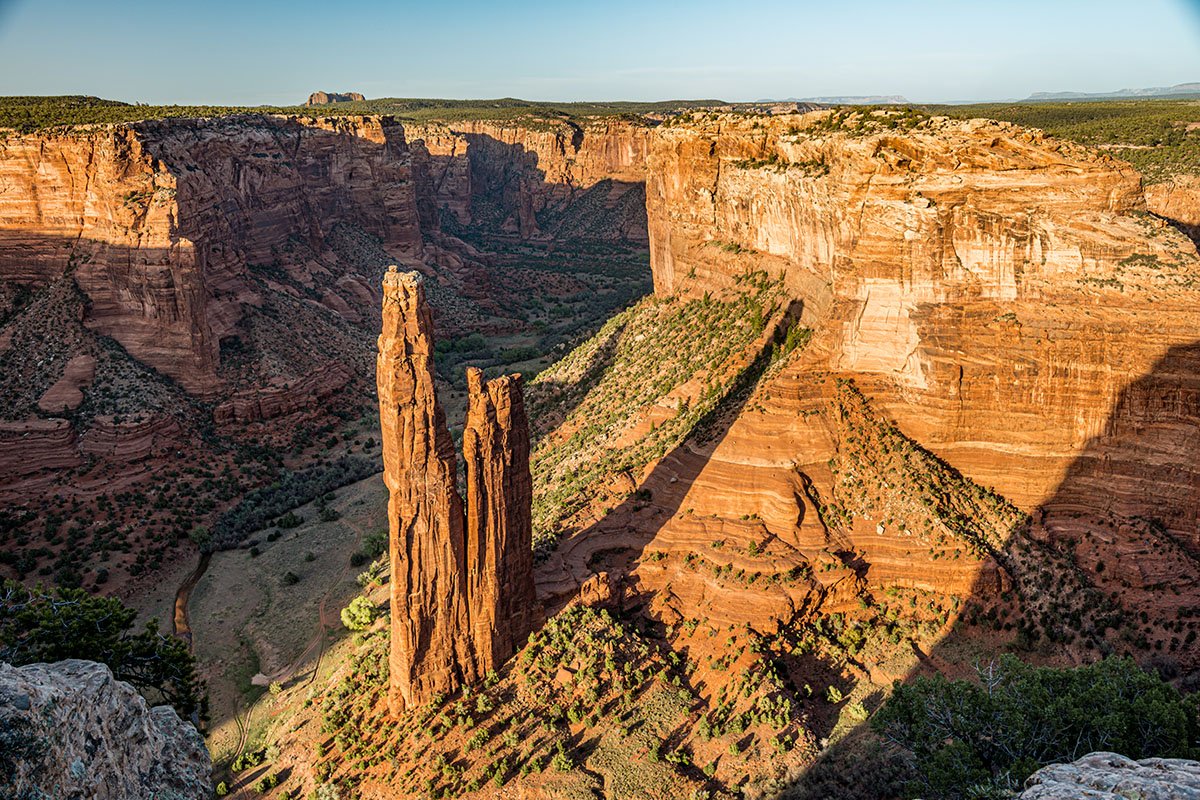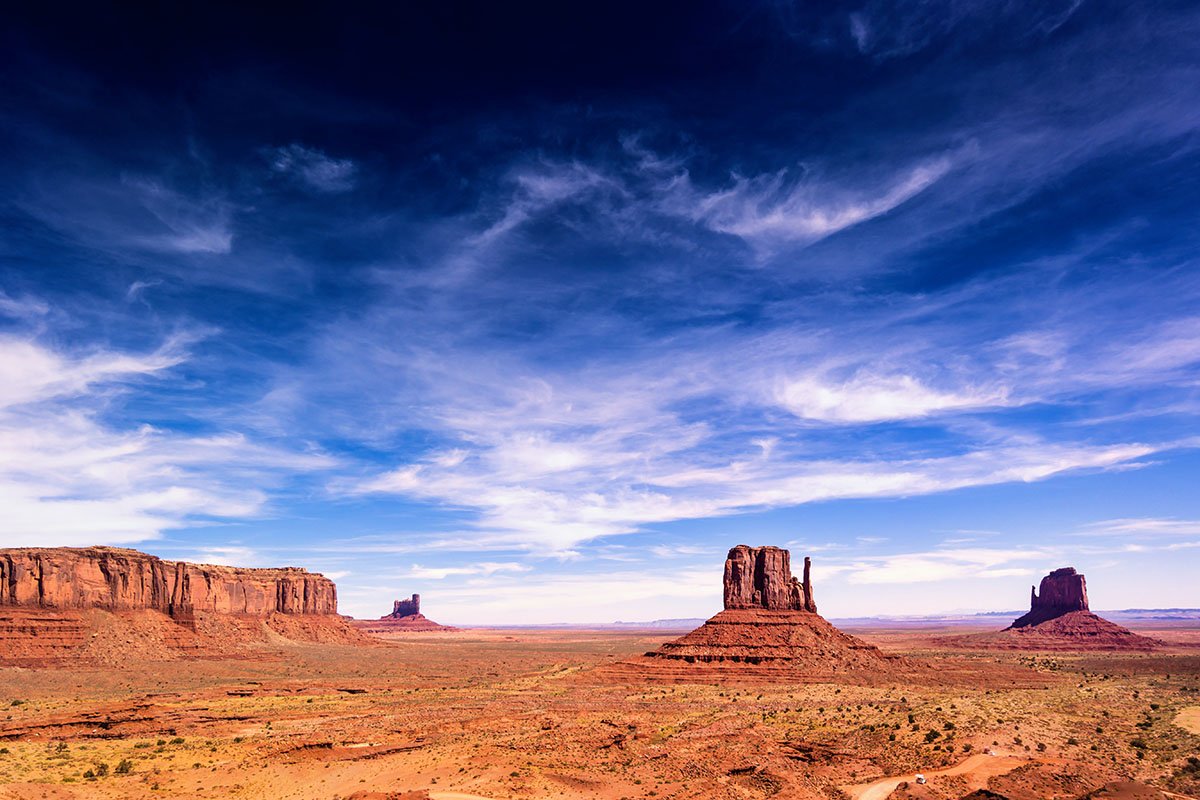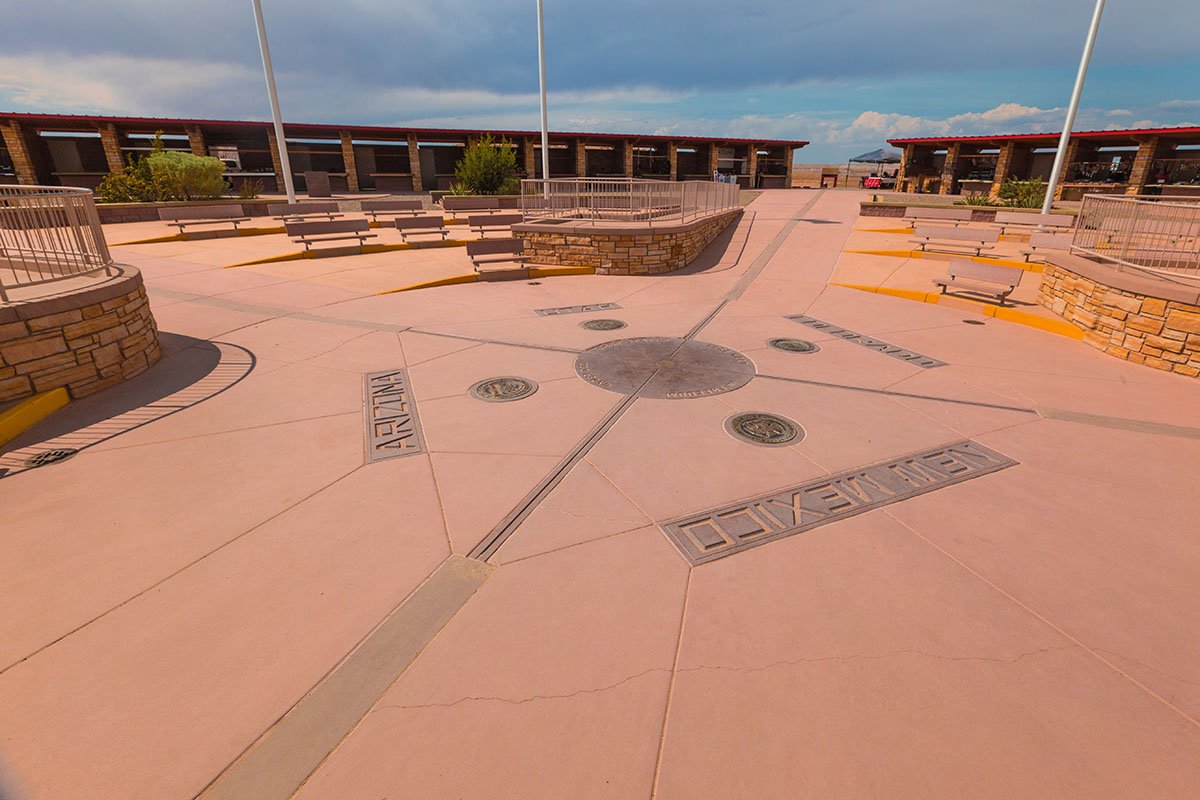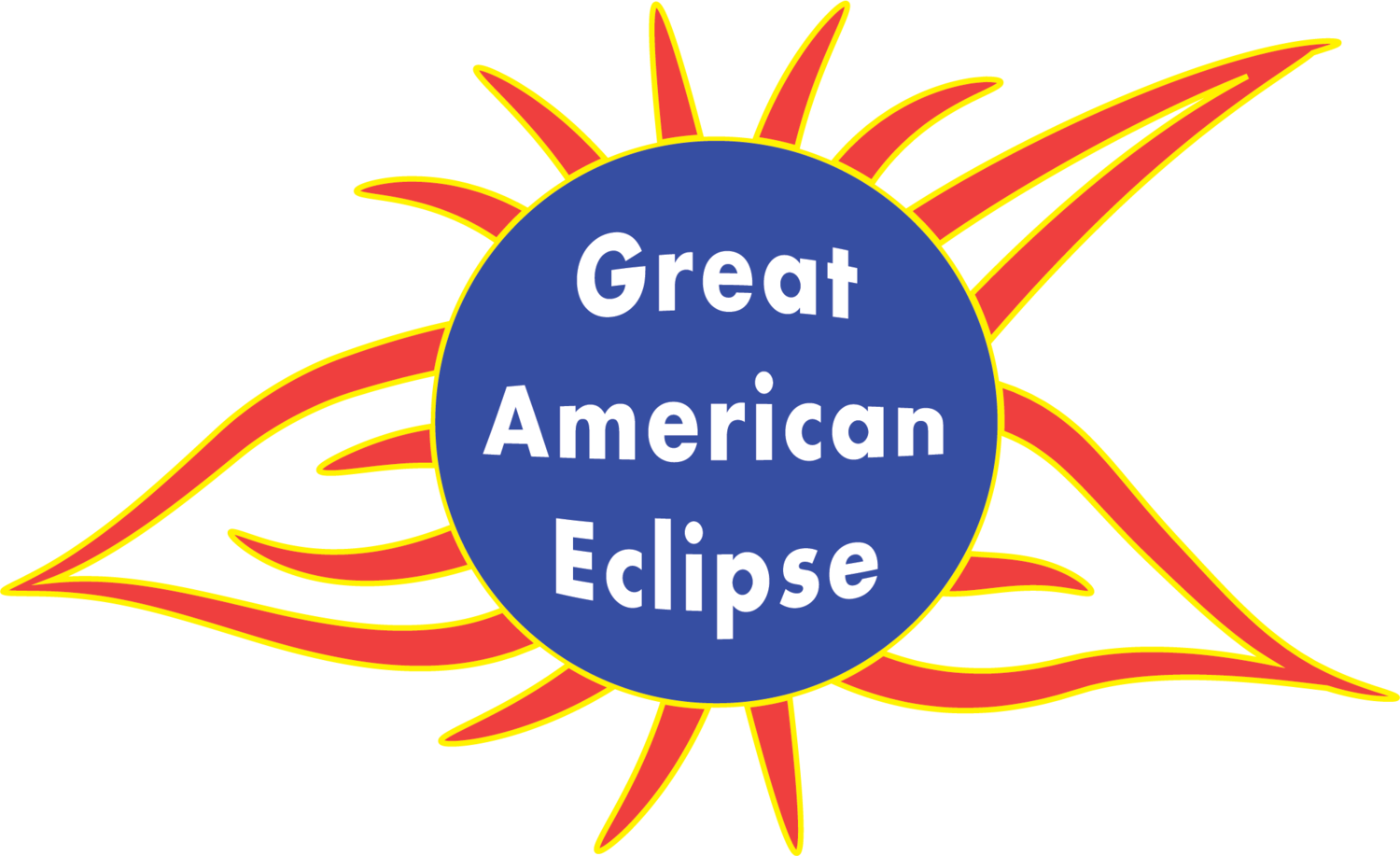Annular Solar Eclipse over Arizona on October 14, 2023
THIS ANIMATION SIMULATES THE VIEW FROM A SPACECRAFT CHASING THE ANNULAR SOLAR ECLIPSE FROM AN ALTITUDE OF 125 MILES! DURING THIS RING OF FIRE ECLIPSE, THE SUN WILL APPEAR AS A DAZZLING THIN RING. BE SURE TO USE ECLIPSE GLASSES OR ANOTHER SAFE SOLAR VIEWING METHOD. AS THE ECLIPSE BEGINS IN THE EARLY MORNING IN OREGON, THE MOON'S SHADOW IS ELONGATED AND TRAVELING FAST AT 7000 MILES PER HOUR! AFTER CROSSING CALIFORNIA, NEVADA, IDAHO, UTAH, ARIZONA, COLORADO, NEW MEXICO, AND TEXAS, THE ANNULAR SOLAR ECLIPSE PROCEEDS TO CENTRAL AMERICA AND SOUTH AMERICA.
An annular solar eclipse visits the scenic northeast corner of Arizona. If you are inside the path of annular solar eclipse, you will see the dramatic sight of the Sun as a thin ring, almost but not completely eclipsed by the Moon. Daylight will be dimmed considerably, but not dark like a total solar eclipse. This eerie sight can be enjoyed with eclipse glasses and other safe viewing methods.
The annular solar eclipse begins in Arizona at 10:29 am MDT with the speed of the Moon’s shadow being 3150 mph. The annular solar eclipse leaves Arizona at 10:35 am MDT and the Moon’s shadow diminishes to 2626 mph. The maximum duration of annularity in Arizona is 4 minutes and 26 seconds.
This corner of Arizona is wholly within the Navajo Nation and Hopi Reservation. This is an exceptionally scenic region of the United States and people traveling here for the eclipse will also enjoy dark night skies for stargazing. Three places of great natural beauty and cultural significance inside the path of annular solar eclipse are the Monument Valley Navajo Tribal Park (Tsé Biiʼ Ndzisgaii in the Navajo language), Canyon de Chelly National Monument, and Navajo National Monument.
If you visit the Navajo Nation or Hopi Reservation for the eclipse, be aware that indigenous people in the Four Corners area have spiritual beliefs about eclipses and many will choose to remain inside their homes during the time of the eclipse. Visitors are welcome but be respectful of their culture and understand that an eclipse is a special time for meditation. Learn more at ipcca.info/ipcca-note-native-american-perspectives-on-the-total-solar-eclipse-august-21-2017 and www.smithsonianmag.com/blogs/national-museum-american-indian/2017/08/21/american-indian-beliefs-about-eclipse/
Overview map of the four corners region
A note about time zones: While most of Arizona observes Mountain Standard Time all year, be aware that this area of northeast Arizona inside the Navajo Nation and Hopi Reservation does observe Mountain Daylight Time which is in effect on eclipse day.
About the Annular Solar Eclipse
During an annular solar eclipse, the apparent size of the Moon’s disk is slightly smaller than the apparent size of the Sun’s disk. Therefore, only the outer edge of the Sun remains visible and the Sun appears as a brilliant ring if you are inside the path of annular solar eclipse. This is an otherworldly sight often called a “ring of fire”. Here are instructions for the safely viewing solar eclipses by the American Astronomical Society and endorsed by several professional societies.
Timeline of the october 14, 2023 annular solar eclipse. Learn more at www.greatamericaneclipse.com/october-14-2023
This eclipse will be a warm-up act for the spectacle of the total solar eclipse crossing the United States just 177 days later on April 8, 2024. While not as dramatic as a total solar eclipse, an annular solar eclipse promises a spectacular vision featuring the striking sight of the Sun as a ring. We recommend solar binoculars for viewing the dynamic Baily’s Beads, sparkling points of brilliant sunlight as the Moon’s limb rolls over the Sun’s edge.
Tips for viewing the annular solar eclipse
Get your eclipse glasses early! They will sell out in the weeks before eclipse day. We offer eclipse glasses which are ISO 12312-2 certified and made in the USA at www.greatamericaneclipse.com/eclipse-viewing/eclipse-viewing-glasses
Learn the simple methods to safely view a solar eclipse. At all times during an annular solar eclipse, you must use eclipse glasses or other safe viewing method. Visit eclipse.aas.org/eye-safety for detailed instructions.
Plan ahead. If you choose to stay in a hotel, be aware that most will sell out. A perfect guide to planning your eclipse is our field guide, greatamericaneclipse.com/books/field-guide-to-the-2023-and-2024-solar-eclipses.
Get to your destination early and try to spend eclipse night at or near your viewing location. Expect the highways and freeways to be extra busy in the aftermath of totality.
Be self-sufficient. Fill up your gas tank and bring food and water.
Check the local TV weather reports as eclipse day approaches. The meteorologists will give you great advice on viewing the eclipse and whether you may need to relocate. We recommend eclipsophile.com as the essential site for eclipse meteorology.
Unless you are an experienced photographer, we recommend that you not attempt photography during the eclipse. You will be so stunned that it will be difficult to operate a camera. If you choose to do photography, visit Fred Espenak’s MrEclipse.com for advice.
Animation of the Annular Solar Eclipse across Arizona
Our animation shows you exactly where the eclipse will be total, moment-by-moment. The maximum duration shown is for locations along the very center of the eclipse path. This animation is built using data from retired NASA astrophysicist Fred Espenak (eclipsewise.com) and eclipse expert Xavier Jubier (xjubier.free.fr). You may freely share our maps and animations on social media and web sites, we just ask for a link to our website.
Impact of the eclipse in Arizona
The annular solar eclipse will attract people from throughout the nation. People will most likely drive the shortest path to a location inside the path of annular solar eclipse. This map shows that northeast Arizona can expect visitors from the metropolitan areas of Phoenix and Flagstaff. Those in Tucson may find a location in New Mexico to be a shorter drive.
Eclipse weather in Arizona
COURTESY OF ECLIPSOPHILE.COM
The essential eclipse weather website eclipsophile.com says that the weather prospects in Arizona are very good. Further, “Count the number of world-class observatories in Arizona and New Mexico and you will be reassured that you have reached the best eclipse-watching weather along the track. The centreline graph of cloud amount shows a low-amplitude up-and-down pattern that averages around 28 percent mean cloudiness. The map … shows a mottled blue pattern, indicating that the sunny character of the climate extends across the width and length of the eclipse path in these states.”
Our advice is to stack your odds by paying attention to short-term weather forecasts and if poor weather is forecast, jump in your car very early on eclipse day (or the evening before) and drive either to the northwest or southeast to chase after clear skies. You will never regret the effort to seek out a clear view of an annular eclipse of the Sun, it will register in your memory all your life.
Eclipse times at scenic sites in Arizona








